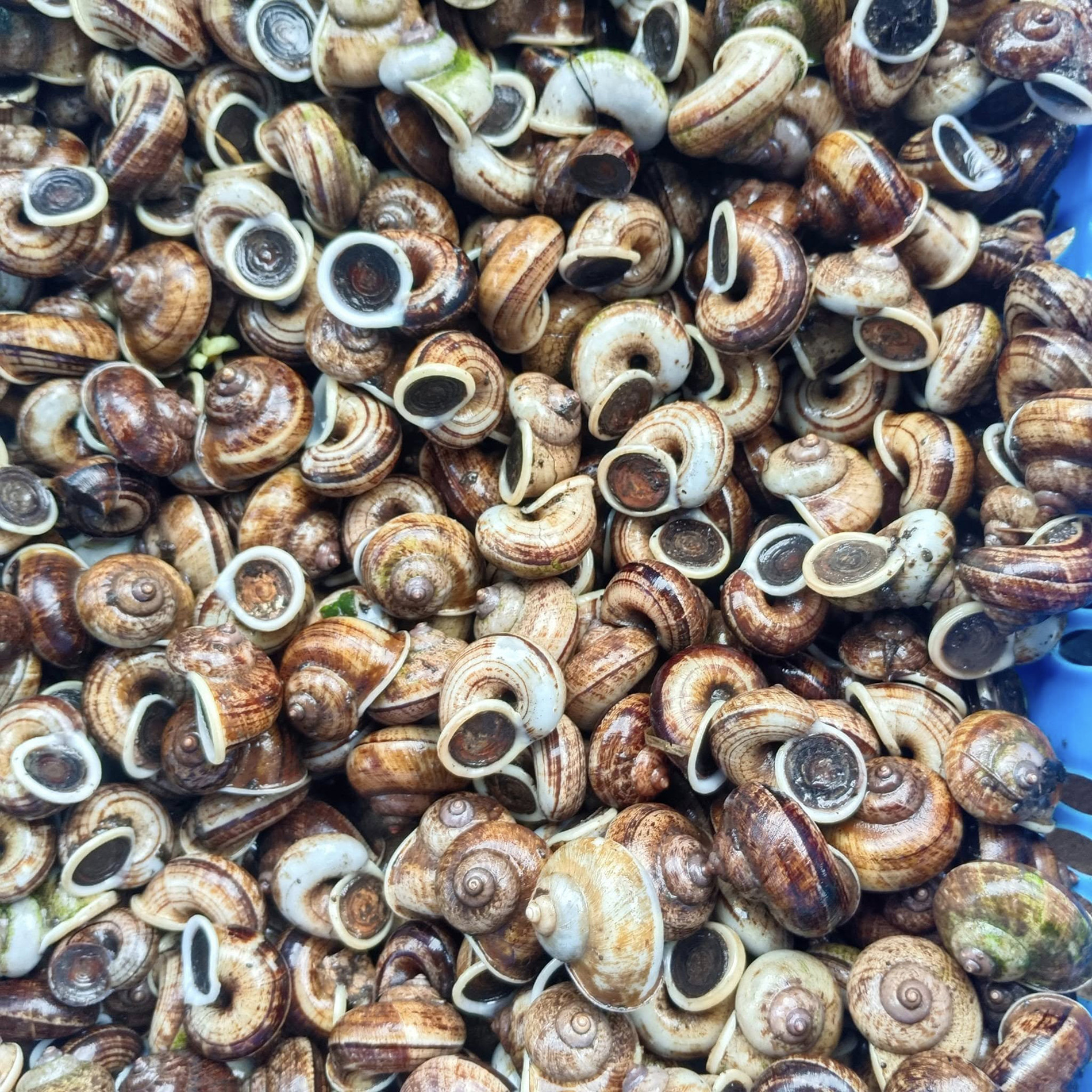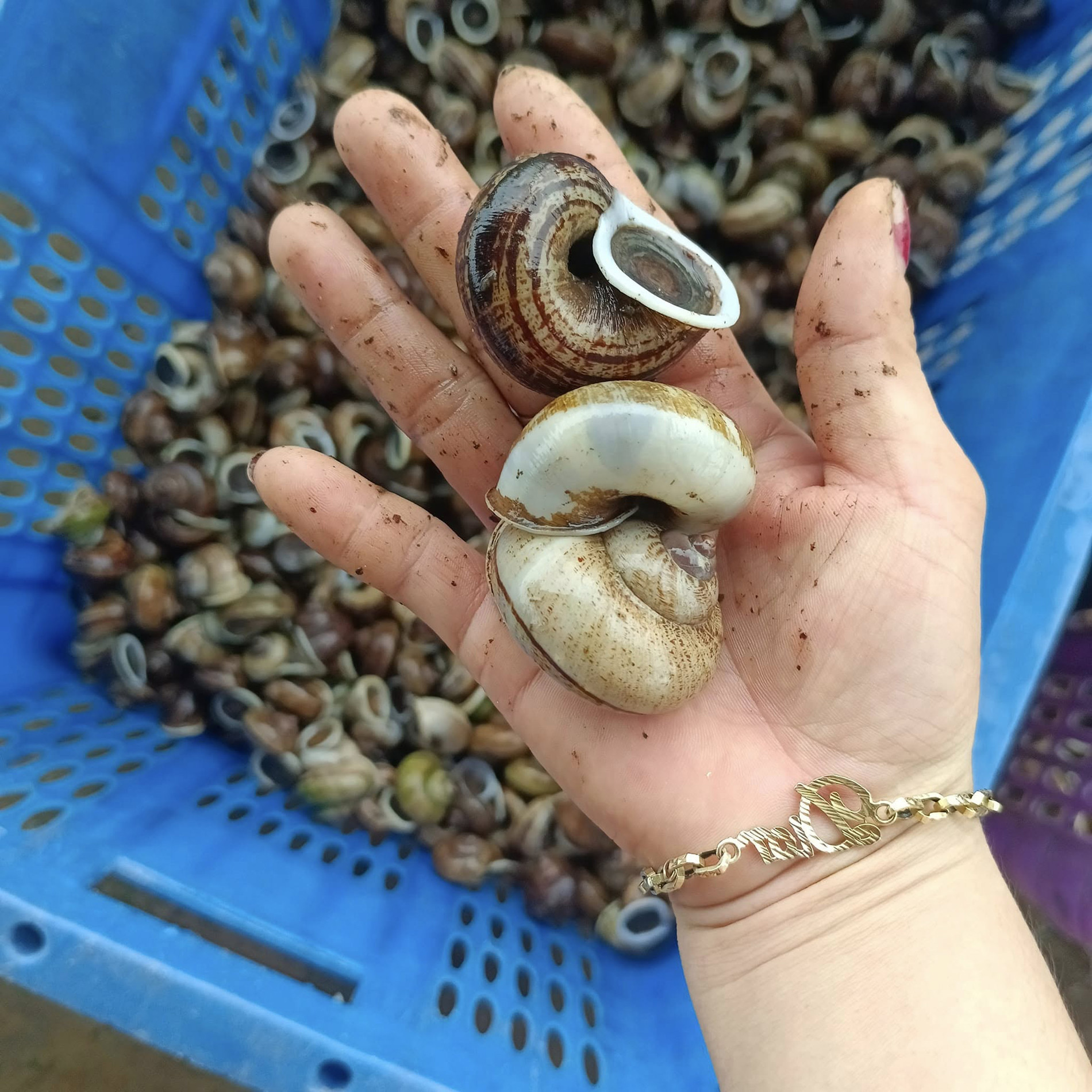After summer rains, locals in several districts of Ninh Binh such as Gia Vien, Yen Mo, and Nho Quan head into the valleys and scale rocky cliffs to hunt for a unique seasonal delicacy.
Known for its crunchy head, tender body, and herbaceous aroma, the mountain snail (also called rock snail) is a wild specialty that's especially prized during the rainy season.

Among Ninh Binh's culinary highlights - such as goat meat, scorched rice, and fermented fish salad - mountain snail stands out as a lesser-known but locally beloved dish that makes its appearance in the summer months.
Shaped like a land snail but flatter and smaller, these snails coil in several rings and feature a dark shell, ranging from light black to brown, with a circular opening resembling a coin.
According to local residents, these snails emerge most abundantly after the first summer downpours. At this time, villagers venture into valleys, climb mountain slopes, and scour cliff faces or caves to collect them.
"After every rain, mountain snails cover stream banks, tree hollows, and cave mouths. When disturbed, they retract quickly and fall to the ground with a popping sound, but their thick shells prevent breakage," shared Quynh Loan from Nho Quan District.

With years of foraging experience, Loan notes that mountain snails thrive in clean, open areas rich in medicinal plants. Their unique flavor comes from their diet of moss, roots, leaves, fruits, and herbs.
On sunny days, snails retreat into rock crevices or tree roots. But in rainy weather or at night, they emerge to feed. Snails collected on rainy days are considered the best - plump, firm, and richly flavored.
However, harvesting mountain snails is no easy task. "It requires trekking across multiple mountains, creeping around slippery rock walls, often at night or in the rain. It’s dangerous due to poor visibility and the presence of snakes, centipedes, and other forest insects," Loan added.
 |
 |
Loan explained that Ninh Binh’s mountain snails are well-loved for their texture and herbal aroma, and they’re simple to prepare.
Once collected, the snails are soaked in water with chili or lime leaves for 15–20 minutes to eliminate mucus and grit. They’re then rinsed thoroughly before cooking.
The easiest and most popular method is boiling. The cleaned snails are cooked in water with lemongrass and lime leaves to enhance the fragrance. They're typically served with a dipping sauce made of fish sauce, garlic, chili, lime, and chopped lemongrass and lime leaves.
Beyond boiling, locals also remove the meat to mix with wild banana blossom for a refreshing salad, or stir-fry the snail meat with lemongrass and chili, or steam them with fermented rice.

Nguyen Hang from Hanoi, a regular fan of the dish, said, “The snail’s head is chewy and crunchy while the body is soft and subtly fragrant, thanks to its natural mountain herb diet.”
She often asks friends in Ninh Binh to purchase and ship the snails so she can prepare them as a unique snack for her family.
“These snails are light but meaty, so they don’t shrink much after cooking. Just boil them and dip in fish sauce with lemongrass and lime leaves - it’s incredibly addictive. My family of four can easily finish two kilograms in one sitting,” she said.
Thao Trinh